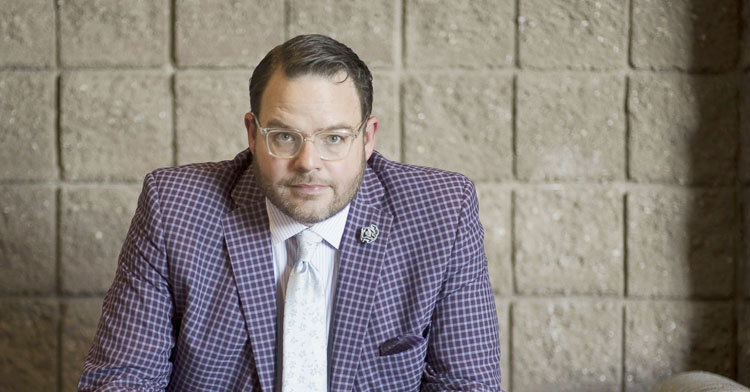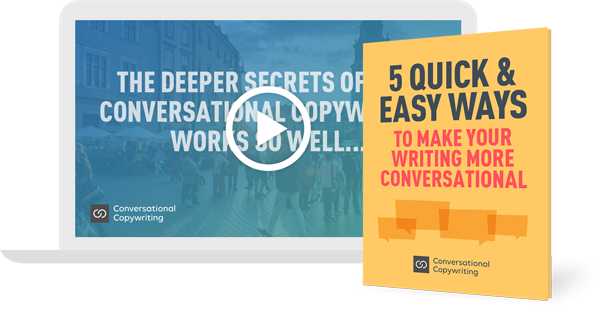
Many of the people I interview are colleagues and friends I’ve known for a long time.
But while Jay and I have both been working online for over two decades, and have a ton of friends in common, we’ve never connected before now.
So I’m really excited to have this opportunity to put that right, and to ask Jay a few questions.
And no, I’m not excited in the way a professional interviewer might be “really excited” to talk to any and every guest. I’m excited because Jay is a giant in the world of online marketing. And because I’m an avid student of his work in the field of word-of-mouth marketing.
Let’s get started…
Nick: Jay, thank you so much for taking the time to join me. Like I said in the intro, it’s surprising our paths haven’t crossed before. And I’m glad we finally got to fix that.
Jay: Indeed! Thanks for the opportunity. The world is weird like that now. We have near-total connectivity in many ways, and multiple companies’ business models are based on you and I crossing paths, yet every once in a while the algorithms take a nap and you end up with a “how have I NOT met this person?” It’s like the relationship version of when someone says they never saw E.T. or whatever, and everyone else is all “WTF?”
Nick: I started out writing copy for offline media. But from the day I first started writing for the web – way back in 1995 – I’ve taken the view that marketing online needs to be different.
Selling online should be less about promoting stuff AT your readers, and more about engaging WITH them.
Do you agree?
Jay: I started that way too, actually. I was originally a direct mail specialist for political campaigns. My biggest gig was for Senator John McCain. I wrote all his direct mail on one of his re-election bids back in the day.
I fully concur with your assessment, but not that it’s a digital imperative per se. I wrote a book called Youtility: Why Smart Marketing is About Help, not Hype.
There, I posit that in a world where distraction is the coin of the realm, the way to break through isn’t to shout louder, but to be genuinely useful. Ample evidence that works, both online and offline. However, it requires patience to use Youtility to acquire customers, and a lot of businesses (mine included, truthfully) sometimes get antsy and refuse to play the long game or see the big picture.
Nick: I hear you. It’s sometimes tough to stay the path. We know the long game is the right way… but then again… it would be nice to make a few extra dollars this month!
Here’s a separate question for you. And it’s an issue that really bugs me.
Social media is, by definition, both social and conversational. By its very nature, it allows companies to interact with their customers and prospects.
And yet, it seems to me that most companies use social media as a broadcast channel, like TV. They use social media to push sales messages at their audience. They barely listen at all. Let alone engage with their audience.
How come? Why don’t companies want to engage with their audience?
Or maybe they do want to, but don’t know how?
Jay: Social media is more about the media, and less about the social. Partially this is driven by algorithmic changes that have largely robbed companies of the ability to engage in social with their fans organically. And if Facebook, Twitter, Linkedin, et al are going to set it up so that social media is essentially a media buy, then we shouldn’t be stunned that companies treat it like a paid media outlet.
Further, the relative effectiveness decline and/or cost increases of other forms of customer communication (TV, radio, print, outdoor, email, et al) put even more pressure on social (perhaps unfairly) to deliver ROI. And when the CMO is asking “Hey, is all this even worth the time and money?” the result is rarely to be more conversational and have fewer calls to action in your social content.
I’ve interviewed more than 300 social media leaders on my podcast, Social Pros. Trust me, they all know HOW to do conversational marketing in social media. But usually, they aren’t allowed to do so.
Nick: Maybe we have an overlap here with your point about Youtility. If there’s a long game to be played with social media… maybe we need to combine our need for fast results with a plan to engage more with our audience, interact with them and earn their trust by being more “social”.
As you know, I’ve been reading your book, Talk Triggers. I picked it up because I’m fascinated by word-of-mouth marketing.
In the book you give a ton of great examples of things companies do to stimulate word of mouth. Like you say, you need to do something worth talking about.
One of the companies you talk about is Uberflip, and some of the cool things they do, including how they’re very open, honest and transparent with their email marketing.
Funnily enough, Ann Handley also talked about Uberflip when I interviewed her a few months ago. She was talking about Uberflip’s voice and their use of an in-house style guide to keep that voice consistent.
Do you think using an honest, consistent and conversational voice gives a business an advantage when it comes to word-of-mouth marketing?
Jay: Thanks very much! Ann and I are both investors in Uberflip, so it stands to reason that we’re fans. My company, Convince & Convert, also partners with Uberflip on their excellent content marketing conference every August. It’s called CONEX.
On word of mouth, what’s fun about that type of customer acquisition is that there are many ways to succeed. In Talk Triggers, Daniel Lemin and I showcase five different types of conversation starters you can use to get customers talking.
Conversational tone isn’t a requirement, but it is one of the five options. We call that “talkable attitude” – when the brand is a little off-kilter and more approachable than most.
Consistency of tone, on the other hand, is a requirement. One of the four requirements of a talk trigger is that is must be “relevant” meaning that the operational differentiator designed to spur chatter should make sense in the context of your company DNA.
Nick: I love that idea of being “off-kilter”. It adds a human element.
When I talk to companies and writers about the conversational approach to copywriting, I tell them they first need to listen. Being a good listener lies at the heart of being a conversational writer.
Can the same be said of word-of-mouth marketing? Before settling on a talk trigger, should marketers first listen to what their audience likes talking about?
Jay: In a way, yes. One of the key steps in the creation of a word of mouth strategy is interviewing customers to determine what they are already talking about, and what they expect.
Critically important is the simple fact that competency doesn’t create conversation. Nobody has ever said, “Hey! Let me tell you about this perfectly adequate experience I had.”
To get people talking, you must instead give them something they don’t expect. And to do word of mouth right, you should invest the time in first learning what those expectations are, and what customers are already noticing.
For example, one of the key case studies in the book is about The Cheesecake Factory restaurants and how their giant menu (5,940 words long) creates customer conversations. Just search on Twitter for “cheesecake factory + menu” and you’ll find lots of examples of customers talking about this unusual element of the Cheesecake Factory experience.
Nick: One final question. When you’re working with companies on word-of-mouth marketing, do you ever put together some words or phrases as a way to help seed the conversation? Do you try to stimulate the word-of-mouth process by giving customers particular words or phrases to share… to get them started?
Jay: I love this question, Nick. We haven’t done it that way in the past, but you’ve got me thinking. We are big believers in the notion of “amplifying your triggers” and nudging customers to notice and remember operational differentiators.
For example, DoubleTree Hotels’ talk trigger is the free, warm, chocolate chip cookies they give each guest at check-in. They amplify the trigger in multiple ways. For instance, every DoubleTree airport shuttle has a vinyl wrap with a giant cookie graphic on it. So it’s not a verbal “seeding” of the conversation like you suggest, but it’s definitely a visual reminder.
Maybe they could play a voice that whispers “wasn’t that cookie amazing?” in the elevators!
Nick: Or maybe the voice could whisper, “It’s OK. Our cookies are made with 100% guilt-free comfort calories!”
Anyway, if you ever want to talk about using words and phrases to help seed conversations, you know where to find me!
This has been great. Thank you so much for your time. I really appreciate it. If people want to learn more about your work, or follow you on social media, where should they go?
Jay: This was a blast. Thanks again for the opportunity. ConvinceAndConvert.com is our main site, complete with my podcast + 5,000 articles for marketers and business owners. JayBaer.com is my speaking/author site, and the dedicated site for the new book is at TalkTriggers.com
Jay Baer, CSP, CPAE has spent 25 years in digital marketing and customer experience, consulting for more than 700 companies during that period, including 34 of the FORTUNE 500. His current firm – Convince & Convert – provides word of mouth, digital marketing, and customer experience advice and counsel to some of the world’s most important brands.
Note: If you’d like to know more about conversational copywriting, check out the course information here…

I receive Bob Bly’s DIrect Response Letter and this was in the February 7, 2019 email…
***Word of mouth has major impact on consumer buying decisions***
Did you know that word of mouth influences up to 90% of all
consumer purchases? When shopping offline, we might consult our
friends and family. When online shopping, we look to our peers
and their digital equivalent: ratings, reviews, and social
content to make smart purchasing decisions. For instance, having
a rating of 3 stars or fewer on Amazon can hurt your book’s
sales, while a 4 or 5 star rating prompts more purchases.
Source: Target Marketing 1/4/19
I thought it was interesting that Mr. Baer said he wrote direct mail for Senator John McCain. I also thought it was interesting that he said, “I’ve interviewed more than 300 social media leaders on my podcast, Social Pros. Trust me, they all know HOW to do conversational marketing in social media. But usually, they aren’t allowed to do so.”